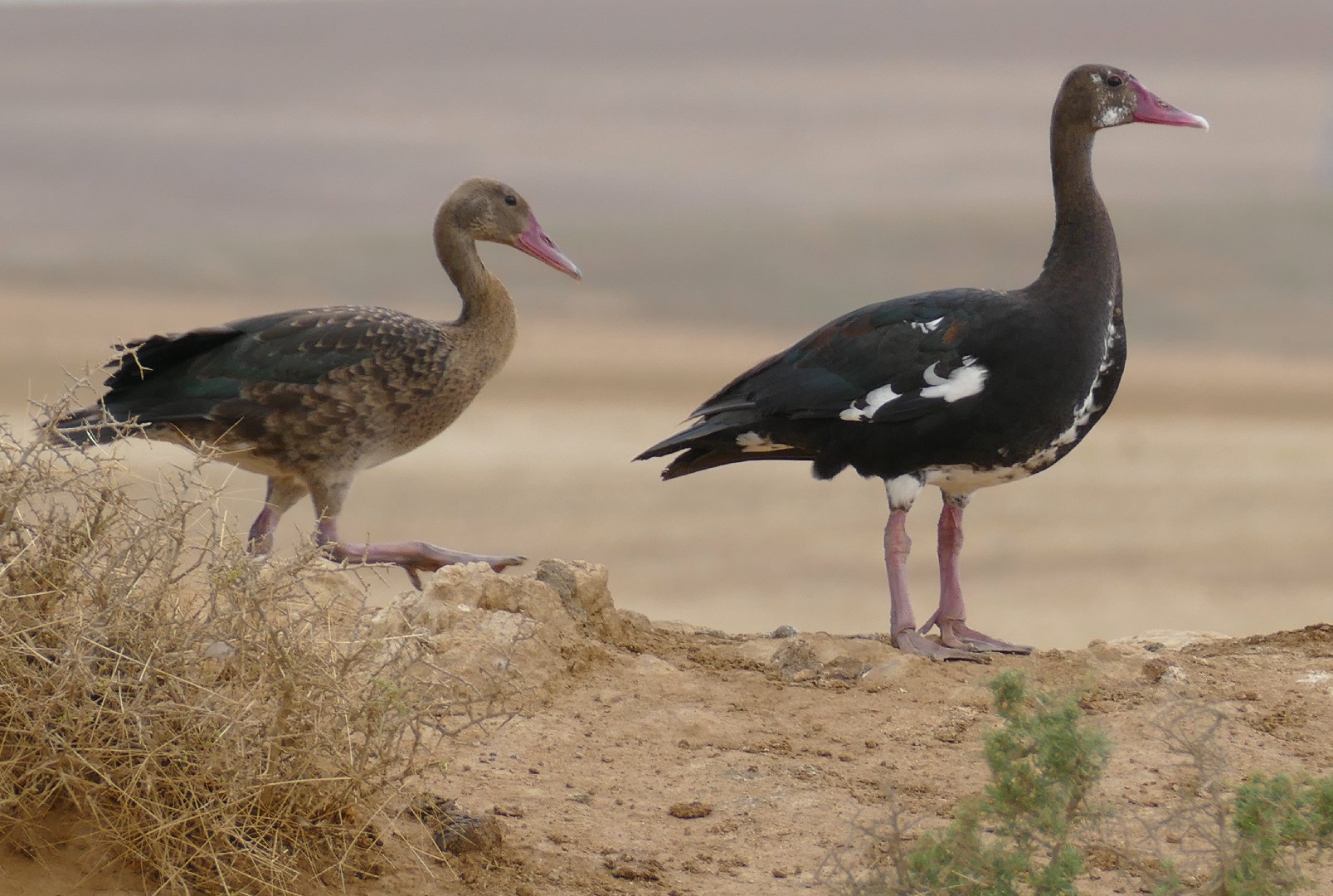Spur-winged Goose
A species of Spur-winged Goose Scientific name : Plectropterus gambensis Genus : Spur-winged Goose
Spur-winged Goose, A species of Spur-winged Goose
Botanical name: Plectropterus gambensis
Genus: Spur-winged Goose
Content
Description People often ask General Info
 Photo By Bernard DUPONT , used under CC-BY-SA-2.0 /Cropped and compressed from original
Photo By Bernard DUPONT , used under CC-BY-SA-2.0 /Cropped and compressed from original Description
Adults are 75–115 cm (30–45 in) long and weigh on average 4–6.8 kg (8.8–15.0 lb), rarely up to 10 kg (22 lb), with males noticeably larger than the females. The wingspan can range from 150 to 200 cm (59 to 79 in). One source claims the average weight of males is around 6 kg (13 lb) and the weight of females is around 4.7 kg (10 lb). However, 11 geese of this species banded in South Africa were found to average only 3.87 kg (8.5 lb), with a range of 2.4 to 5.4 kg (5.3 to 11.9 lb). Another study in South Africa found that 58 males weighed an average of 5.52 kg (12.2 lb) and measured 98.1 cm (38.6 in) in total length; while 34 females averaged 3.35 kg (7.4 lb) in weight and 84.2 cm (33.1 in) in total length. Among standard measurements, the wing chord is 42.5 to 55 cm (16.7 to 21.7 in), the bill is 5.7 to 6.4 cm (2.2 to 2.5 in) and the tarsus is 5.7 to 12 cm (2.2 to 4.7 in). They are the largest African waterfowl and are, on average, the world's largest wild "goose", although in average weight, their size is at least rivaled by the Cape Barren goose. Spur-winged geese appear to be more closely allied to shelducks than "true geese" such as those from the Branta and Anser genera. They are mainly black, with a white face and large white wing patches. The long legs are pinkish red in colour. The nominate race P. g. gambensis has extensive white on the belly and flanks, but the smaller-bodied subspecies P. g. niger, which occurs south of the Zambezi River, has only a small white belly patch. From a distance, P. g. niger can appear to be all black. The male differs from the female, not only in size, but also in having a larger red facial patch extending back from the red bill, and a knob at the base of the upper mandible. This is generally a quiet species. Typically, only males make a call, which consists of a soft bubbling cherwit when taking wing or alarmed. During breeding displays or in instances of alarm, both sexes may utter other inconspicuous calls. This bird is often poisonous due to its diet of blister beetles. The poison, cantharidin, is held within the tissue of the fowl resulting in poisoning of those that eat the cooked goose. 10 mg of cantharidin can kill a human. 
Size
1 m
Nest Placement
Ground
Feeding Habits
Spur-winged Goose's diet is diverse, primarily vegetarian, including grass seeds, sedges, grains, fruits, and vegetables. Occasionally consumes fish and termites, with selective foraging on young grass and grain crops causing it to be viewed as a pest. Forages by grazing, raking, dabbling, upending in water, or diving when threatened. Regularly ingests grit to aid digestion.
Habitat
Spur-winged Goose typically inhabits open and wetland regions such as grasslands complemented by lakes, rivers, seasonal pools, and swamps. Dominating their presence are broad geographical areas consisting of inland water bodies, with a preference for environments surrounded by scattered trees. Elevations up to 2,000 meters are common, though they can be found up to 3,000 meters in eastern Africa. Spur-winged Goose tend to avoid arid zones, saline lakes, and highland regions, favoring places adjacent to grasslands or cultivated fields.
Dite type
Omnivorous
People often ask
General Info
Feeding Habits
Bird food type
Species Status
Not globally threatened.
Scientific Classification
Phylum
Chordates Class
Birds Order
Waterfowl Family
Geese Genus
Spur-winged Goose Species
Spur-winged Goose